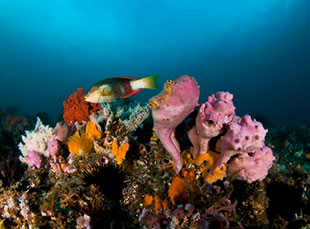
Seascapes
Sandy beaches

The park's extensive coastline offers a number of easily accessible beaches. Four-wheel drive enthusiasts can reach several more secluded beaches.
- To the north, Seven Mile, Bluey's and Boomerang beaches are within easy reach of Forster and surrounding suburbs.
- In the south, Fingal Bay, Zenith, Box, One Mile, and Samurai are popular open beaches.
- The best beaches inside the port are Jimmies, Shoal Bay, Little Beach, Nelson Bay Beach, Dutchies, Bagnalls, Salamander Bay and Wanda.
Sandy beaches support a diverse range of invertebrates, including crustaceans, beach worms and molluscs. Sandy beach shallows and surf areas of exposed sandy beaches are important nurseries for a variety of fish species.
Sandy beaches are a key feeding and roosting site for shorebirds, seabirds and migratory wading birds, including threatened species such as the little tern and pied oystercatcher.
Estuaries
The park includes the state's largest:
- mangrove and saltmarsh area;
- brackish barrier lake system (Myall Lakes);
- intermittently closed and open coastal lake (ICOLL) (Smiths Lake).
Three highly productive estuarine vegetation communities are particularly important: mangroves, saltmarsh and seagrass.
Mangroves
Important mangrove forests, some of the state's largest, are found in the Port Stephens estuary at Corrie Island, Tilligerry Creek, Big Swan and Little Swan bays, Karuah River, Number One Cove and North Arm Cove.
Grey mangrove and river mangrove species are found within the park.
Saltmarsh
Saltmarsh areas are also abundant within Port Stephens, and can be found at the same locations as the mangrove forests.
The saltmarsh areas are important for flood and erosion control, pollution control, and provide food for the estuarine food chain.
Seagrass
Seagrass beds are widely distributed within the Port Stephens estuary and occur adjacent to most shorelines up to Karuah.
Common seagrass species found within Port Stephens estuary include: eelgrasses, paddleweed and strapweed. The seagrass beds are an important habitat for juvenile stages of commercial and recreational species such as snapper, yellow-fin bream, tarwhine and luderick.
Rocky shores
Rocky shore habitat support a wide range of species, including barnacles, gastropods (such as whelks and limpets), chitons, worms and algae.
They also provide roosting and feeding habitat for some seabirds.

